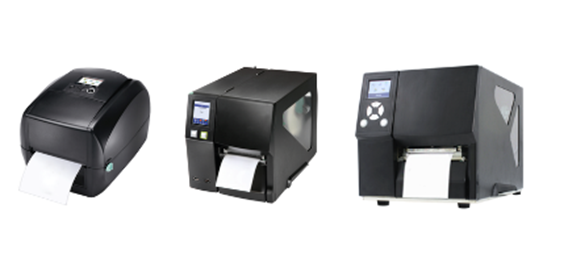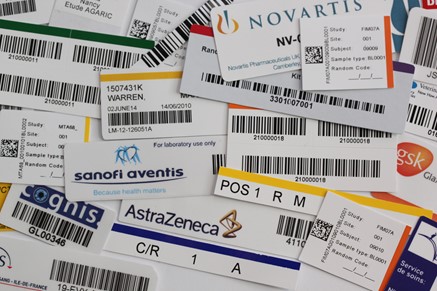10 typical laboratory labelling questions we get asked by our customers
We have compiled a list of the 10 most commonly asked questions when we hold our laboratory labelling workshops. Hopefully, this will give you a good understanding of what labels can help you achieve in a laboratory environment and the type of things you need to ask yourself on your label purchasing journey.
If you have any further questions, our team of specialists are always happy to help so don’t hesitate to get in touch by contacting 0800 917 0024 or enquiries@cils-international.com.
1. We struggle to read handwritten labels. What are our options?
There are three print options available:
- Print durable labels using a standard office laser printer which your laboratory may already have.
- Use a thermal transfer printer. Again, laboratories often have these now days, but if not, they are relatively low cost to acquire and very durable.
- CILS can print data onto your labels for you.

2. What are the costs involved in printing my own labels?
There may be no extra cost at all if you already have a standard office laser printer or a thermal transfer printer in your laboratory.
Durable laboratory labels can be supplied for these printers, are exceptionally durable and will adhere perfectly to laboratory plasticware, glassware, etc.
You may already have label printing software, if not, a professional entry level package starts from around £260.
There are different levels available depending on the complexity of the data you are trying to print, and the source of that data.
If you don’t have a laser printer, you can purchase one from any office supply company for approximately £160, but you must always use the manufacturers’ original toner to achieve good durability.
A thermal transfer printer can cost as little as £300 and requires special print ribbons.
Read our blog ‘Which printer is best for printing durable labels’ or contact us to find out more.

3. Can you print data onto the labels for me?
Yes, we can produce durable labels that are already printed with your data, no matter how complicated. We can work from any spreadsheet or database and you can be safe in the knowledge that we are Cyber Securities compliant and ensure our systems are secure at all times.
4. My current thermal transfer printer doesn’t seem to work properly. Can you help?
Unfortunately, thermal transfer printers aren’t ‘plug-and-play’ like an office laser printer, they do take a little getting used to. Once you have familiarised yourself with them, they should print labels perfectly.
Here are some helpful troubleshooting questions to get you started:
- Are you using the correct ribbon for the label?
- Are the labels within spec for the printer?
- Has the printer been calibrated correctly?
- Is the correct method of label sensing being used?
- Is the print ribbon correctly aligned and not creased?
- Are the print heads worn or scratched?
- Is the correct and most recent driver being used?
- If printing from a Laboratory Information Management System (LIMS), etc. is the software and drivers correctly integrated?
We can guide you in all of this to give you complete confidence using your thermal transfer printer.
5. I’ve used labels in the past and they haven’t worked. What went wrong?
Unfortunately, durable labels are sometimes considered no more technical than stationery labels, and it is not realised that they are constructed using different materials, have special adhesives and computer printable coatings that need to be carefully matched to the end-use application.
For example, if you have a label that goes around a curved polypropylene tube, you will need a label that is conformable, wraps around and doesn’t lift. Tell us what you need and we can help you.
6. How do I print complicated data?
The easiest solution is to print from a database or spreadsheet using professional labelling software such as NiceLabel. This will give you the functionality to design your label and incorporate any data from your data source. You can also set up data fields to have rolling serial numbers, barcodes, sequence numbers, etc. which will remember the last number you printed.
There are various software levels available, but which one you need depends on the complexity of your data.
7. Will my labels fall off?
No, not if the correct label and adhesive is used for the right application. For example, labels will be extremely durable and can resist freezer storage, but that doesn’t mean to say they will survive storage in liquid nitrogen at -196°C. We can advise the best label.
8. Will my text come off my labels?
No, as long as there is a truly computer printable coating on the label, the label material and the grade of thermal transfer ribbon used is correctly matched to the end-use application. For instance, there is even a label and ribbon combination that will resist xylene when histology slides are prepared.
9. Can I have my company logo etc. on my label and still print the data myself?
Yes, you can, provided that we know the end-use application to make sure the pre-print will survive your processes. You can then use your laser or thermal transfer printer to print your data onto these partially pre-printed labels.
10. I have a new study. Where do I start?
You will need to know the following:
- What would you like us to print?
- What are you going to print?
- How are you going to print it?
- What is the format of the source data?
- What is the label going to be applied to?
- What is the life expectancy of the label?
- How is it going to be stored, for how long and at what temperature?
- What will the label need to resist?
Once you have shared this information with us, we will be able to provide you with the appropriate labels, printer, software etc.